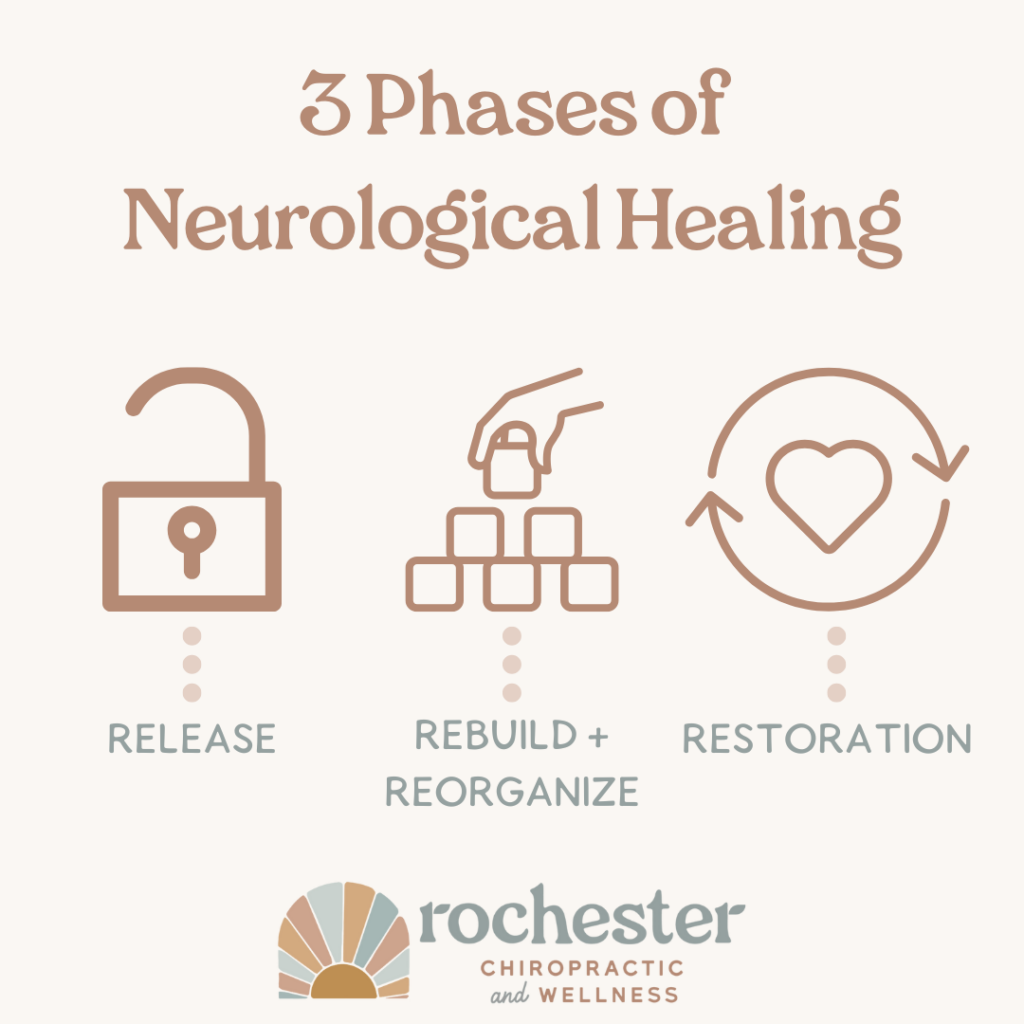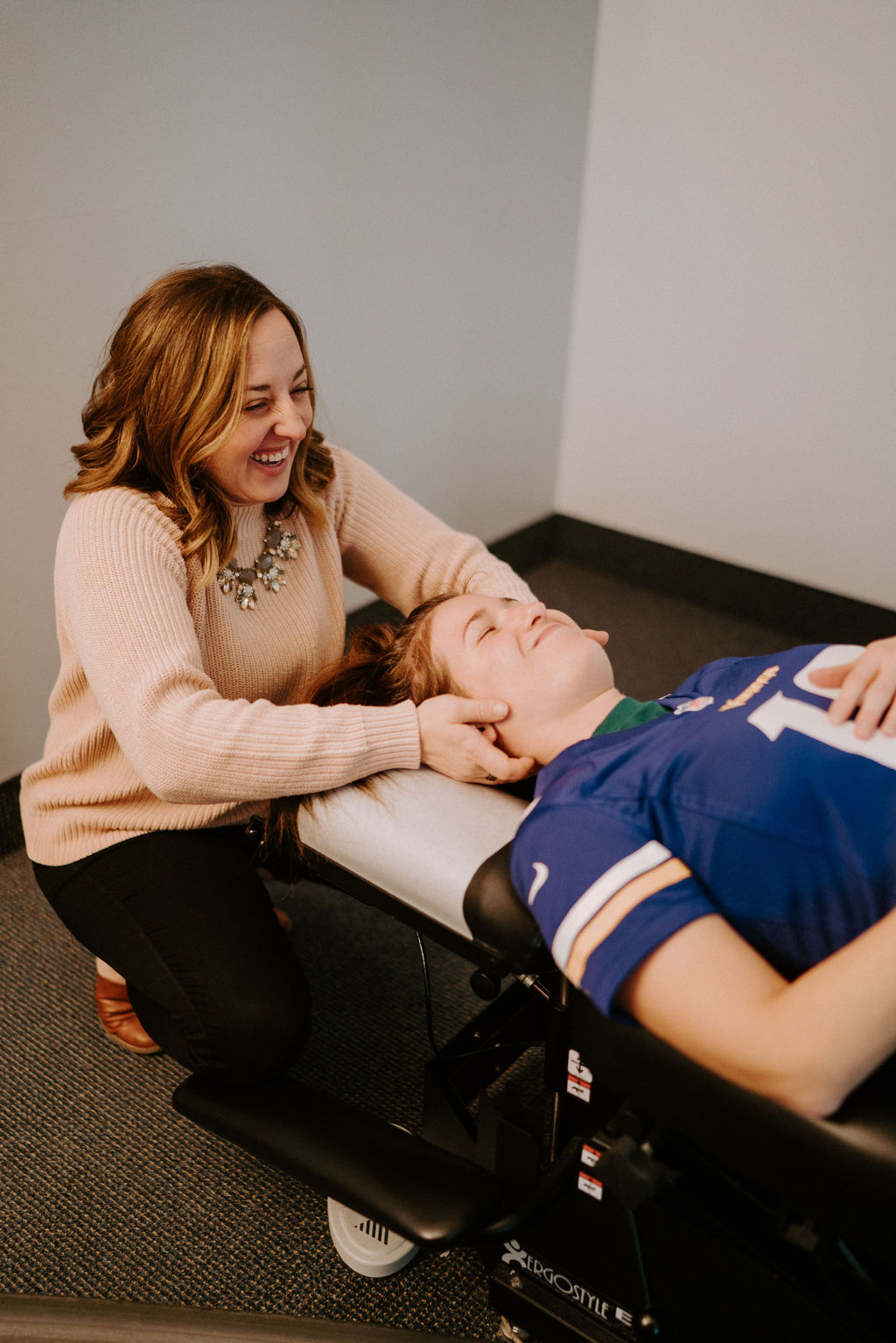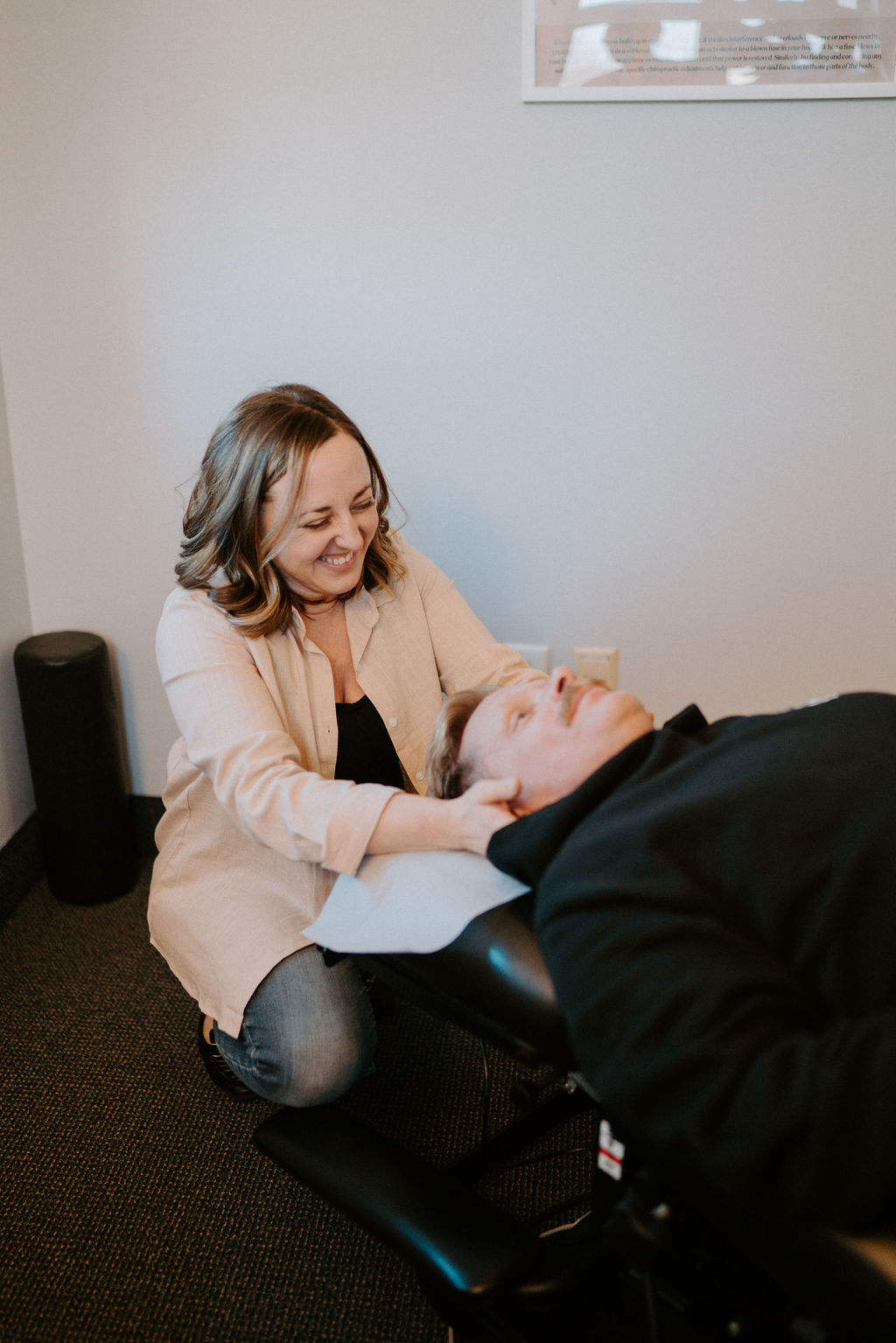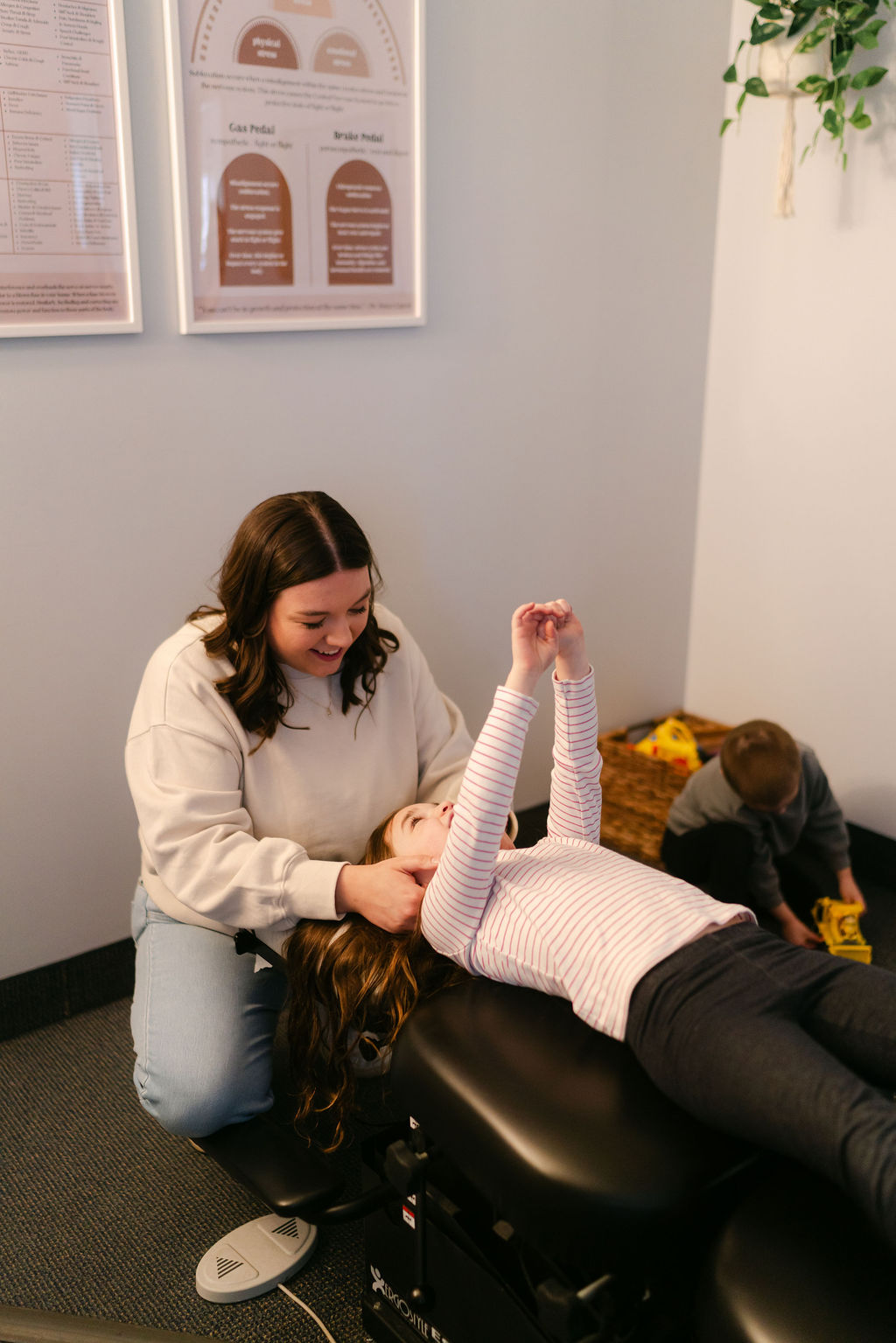WElcome TO
Explore our blog that focuses on holistic care for any and all ages - pediatric well-being, pre/post-natal health, and adult vitality.
THE BLOG

Neurological healing is no easy task. Nor is it normally a linear, straightforward path. In fact, it’s most commonly quite the opposite, going through multiple stages and phases on its way to optimal healing and outcomes.
The first challenge parents and patients face when trying to determine whether or not things are moving in the right direction with neurological healing is that the process is the stark contrast opposite of traditional medical treatment. Every single component of the medical system is designed not with healing in mind, but with suppressing, stopping, and shutting things down as the ultimate goal.
Have an infection? Kill it off with an antibiotic (which literally means anti-life).
Have a fever? Shut it off with a fever suppressor.
Have inflammation? Shut it down with steroid-based medications.
Have hyperactivity and impulsivity? Suppress it with stimulant medications.
Have anxiety? Cover it up and suppress it with drugs.
The medical way is one that is supposed to “work” fast and, therefore, be readily apparent. Unfortunately, parents today especially know that what we discussed is very true – the vast majority of the time, drugs and medications are doing nothing to address the actual root cause, create any actual healing, and they also come with a whole host of unwanted side effects.
So, what other options do we have? Well, if you’re reading this, then it’s likely that you’ve already begun to take the root cause of yours or your child’s challenges head on with neurologically-focused chiropractic care, or you’re strongly considering it and wondering exactly how that process works.
To make this super simple to understand, we’ll be breaking things down into three parts. First, the healing phases we’ll discuss are:
- Release Phase
- Rebuild + Reorganize Phase
- Restoration Phase

Phase 1 – Release
The first phase of neurological healing + restoration is often the bumpiest. The longer you have been subluxated and stuck in sympathetic dominance (dysautonomia), the deeper those stress patterns and dysfunctions set in. The body is doing all it can to adapt, but in the toughest of cases (Perfect Storm + Neuro Intensive ones especially), we generally find that the nervous system is just flat out worn out and exhausted.
Therefore, when you release those deep subluxation patterns in the first two (2) weeks to two (2) months of care, oftentimes, patients will experience some form of “neuro detox” where certain signs and symptoms may get a bit worse.
This is really no different than what happens when you get a fever, diarrhea, or traditional immune response – the body is actually getting “sick” to get well again.
So, in the vast majority of these neurological detoxes that occur way early in care, it’s actually a “good” sign that healing is happening. We’re getting the nervous system unstuck from the long-standing stuck, stressed, and exhausted subluxation patterns it’s been in.
Phase 2 – Rebuild + Reorganize
This is an exciting phase of care, and it’s really rooted in the science of something called neuroplasticity. Which honestly is what all of neurologically-focused chiropractic care is based upon.
Neuroplasticity, also known as neural plasticity or brain plasticity, is the ability of neural networks in the brain to change through growth and reorganization. It is when the brain is rewired to function in some way that differs from how it previously functioned.
Subluxation, dysautonomia, and the “Perfect Storm” are all what stop neuroplasticity, growth, and optimal development dead in its tracks and throw things off course. Therefore, when we hit this stage of care, and we start to see growth and reorganization happening again and a child getting back on track with their milestones and development – oh man, is it exciting!
What does rebuilding + reorganization look like practically? Check out the following list to spot the signs of this stage in progress:
- INSiGHT Scans shifting, changing, calming, clearing, and reorganizing
- Oftentimes this can be tracked with our “neurometrics” and scores
- Improved Neuro-Postural Patterns
- No more head tilt + rotation, shoulders relaxed and level, etc.
- Improved Neuromuscular Tone + Coordination
- Observed through movement, gait analysis, etc.
- Improved Neurological “Soft Signs”
- Sleeping better, eating better, improved digestion, better immune health, improvements in posture and coordination, etc.
- Improved Focus + Endurance in School, Therapy, etc.
- Being able to do more during therapy appointments and school
- Less Severe Subluxation Patterns and Adjusting Restrictions
- When things shift, move, and get easier to adjust
By no means does a child or patient need to experience everything on that list to be in this phase of neurological healing, as healing is unique to each individual. However, even observing and having just a couple of them means things are progressing and on the right track to optimal healing and neurological restoration!
Phase 3 – Restoration
This phase of care is the ultimate goal of our initial care plans, but honestly, it’s just the beginning of the best part – the child or patient is now experiencing a high quality of LIFE once again!
We feel strongly that we are designed to be strong, healthy, resilient, and happy, and therefore live a high quality of life as a result! This stage of care is when kids and patients really have had transformative changes with their health and day-to-day experience a quality of life far greater than what they had prior to starting chiropractic care.
This stage then sets the stage for wellness, but the work is not all the way done. In this stage, we want to stay on the job of neurological healing and continue to deploy neuroplastic healing principles in order to put “slack” and “stability” in the system.
This third state of neurological healing is essential for one reason – life goes on. Meaning kids are still going to have growth spurts, falls and injuries, colds and sickness to get through, social and emotional challenges, school, sports, seasonal changes, and so much more they still need to stay ahead of and adapt to. Adults are right there with them with work stressors, seasonal allergies, social engagements, and other physical stressors.
By completing this final stage of the neurological restoration care plan, we can then transition into lifetime wellness care with a strong, resilient, and more stable nervous system. A more stable nervous system can better withstand various regular life stressors and stay healthy and strong through them!
That is the ultimate goal we have for our patients – to not just get healthy for a season, but stay there for good! To do that, this third phase and achieving restoration is essential.
Diving Deeper into Neurological “Soft Signs” of Healing
While every single one of us, from the parent team to the provider team, wants to see massive changes and achievement of the big goals happen right away… science and clinical experience let us know that, typically, that is not the case.
So often, and so rightfully so, some of the most common examples parents have for BIG goals for their children’s care include things like starting to walk or talk, eliminating seizures or autism spectrum related challenges, improving focus and behavior, lessening anxiety and depression, and so forth. For the purpose of this article, we’ll refer to these functions as “brain-based” or “higher level” functions.
In contrast, more primary and basic neurophysiological functions that are essential to health are things like eating, sleeping, digestion (pooping), motor planning, respiratory + immune health, and so forth. These core health functions could also be called more primal or foundational components of health, and what many parents and providers don’t know is it’s these things that get offline and off track first, which then leads to the bigger “brain based” problems down the road as neurological function and development is compromised.
Therefore, on the road to optimal neurological healing, we often need to see changes with these “soft signs” (and scans), and the more basic physiological functions first.
- When a teen intensive patient struggling with anxiety, epilepsy, and exhaustion starts to finally fall asleep easier and stay asleep longer, we know we’re on the right track!
- When a three (3) year old patient recently diagnosed with autism and apraxia (nonverbal) begins experiencing better digestion, immune health, and gross motor planning, we know we’re on the road to recovery + restoration!
- When a grade schooler struggling with ADHD and behavioral regulation challenges has more relaxed shoulders, less tension, and gets adjusted easier, we know we’re making the right changes happen to their nervous system!
So often for parents, not seeing the big changes happen instantly with chiropractic care can be frustrating and, if we’re being honest, even disheartening. But when we can point out these incredibly important changes on their INSiGHT Scans and with their neurological “soft signs,” we can rebuild that hope and let you know we’re heading in the right direction!
If you have any questions at all about what phase of care your child is in (or yourself), do not hesitate to ask and really dig in with your doctor at the next visit. We love talking through this stuff with our patients, and always do our best to stay ahead of it, making sure you know what to look for and what to track as care progresses through each and every phase of care!

Is your child already dreading summer celebrations? Are you anxious about the inevitable meltdowns, tantrums, and tears that seem to accompany every fireworks display or crowded holiday gathering?
If you’re like many parents we meet, you’ve probably tried everything. Noise-canceling headphones, watching fireworks from a distance, or even avoiding celebrations altogether. But what if we told you that these well-meaning strategies only address the symptoms, not the actual root cause of your child’s sensory overload?
The Hidden Truth About Sensory Challenges
Studies show that up to 1 in 6 children struggle with sensory processing challenges. For these kids, events like Fourth of July celebrations aren’t just uncomfortable—they can be genuinely overwhelming and even painful.
But here’s what most physicians aren’t telling you: your child’s extreme reaction to fireworks and celebrations isn’t simply about loud noises or bright lights. It’s often a sign of a deeper neurological imbalance that can be properly addressed, not just managed through avoidance.
Logan’s Story: From Overwhelmed to Thriving
Let us tell you about Logan, a child whose story might sound familiar. For his first few years of life, Logan struggled with such severe sensory overload that his family couldn’t take him anywhere in public. Not grocery shopping, not to restaurants, certainly not to loud events like fireworks displays.
His parents constantly dreaded social gatherings and worried about his future and starting school. Logan’s sensory challenges were so extreme that once, when he cut himself badly, he didn’t even register the pain. He was only bothered by the sensation of blood running down his arm.
Traditional approaches weren’t helping, and his family felt increasingly isolated and hopeless. But today, after receiving neurologically-focused chiropractic care that addressed the root cause of his sensory processing challenges, Logan is a thriving honor roll student who can enjoy family celebrations, including Fourth of July festivities.
His transformation from a child trapped by sensory overload to one who can participate fully in life’s experiences shows what’s possible when we address the real underlying cause rather than just managing the symptoms.
Understanding Your Child’s Nervous System
Sensory overload isn’t just about external triggers like loud noises and bright lights. It’s a sign that your child’s nervous system is stuck in a state of constant “fight or flight,” making normal sensory input feel threatening or overwhelming.
This state, which we call “sympathetic dominance,” means your child’s brain is constantly on high alert. Unable to properly filter and process sensory information from their environment.
What makes the Fourth of July particularly challenging is that it combines multiple intense sensory experiences simultaneously. Loud unexpected noises, bright flashing lights, crowds, unusual smells from sparklers and barbecues, and disrupted routines.
When your child’s nervous system is already struggling to process everyday sensory information, these holiday celebrations can become the perfect storm that pushes them over the edge into complete overload.
The Root Cause: Beyond Symptom Management
The root cause of your child’s sensory challenges is often a condition called dysautonomia. An imbalance between the “fight or flight” sympathetic nervous system and the “rest and digest” parasympathetic system.
This imbalance is frequently caused by subluxation, which is essentially interference in the communication between the brain and body. Particularly affecting the vagus nerve—the master controller of the parasympathetic nervous system.
Surprisingly, this subluxation often begins during birth, especially when interventions like C-sections, forceps, vacuum extraction, or induction are involved. Creating what we call “overlooked and dismissed birth trauma.”
When the vagus nerve is compromised by birth trauma, your child’s nervous system gets stuck in an overactive sympathetic state. Making it nearly impossible for them to naturally calm and regulate themselves.
Why Traditional Approaches Fall Short
Traditional approaches to sensory overload focus primarily on avoidance strategies—skipping fireworks, using noise-canceling headphones, or creating “sensory-friendly” environments.
While these strategies can help in the moment, they don’t address the underlying neurological dysfunction that makes your child hypersensitive in the first place.
Medications that attempt to dampen your child’s responses often come with unwanted side effects and still don’t fix the root neurological imbalance.
Even therapy approaches like sensory integration therapy or occupational therapy, while beneficial, are often less effective if the underlying nervous system dysfunction isn’t addressed first.
A Different Approach: Addressing the Root Cause
At RCW, our approach takes a fundamentally different path by directly addressing the root cause of your child’s sensory challenges—the subluxation and dysautonomia affecting their nervous system.
We start with comprehensive INSiGHT Scans. Particularly the NeuroSpinal EMG Scan, which allows us to measure the exact location and severity of nervous system stress and tension in your child’s body.
These scans help us identify the “nociception” or neurological noise that’s disrupting your child’s ability to process sensory information properly. Creating what we often call “Noisy Brain Syndrome.”
Our precise, gentle adjustments then target these areas of subluxation. Helping to restore balance between the sympathetic and parasympathetic nervous systems and allowing your child’s brain to better filter and process sensory input.
Imagine a Different Summer for Your Family
Imagine your child actually looking forward to Fourth of July celebrations, get-togethers, and summer parties instead of dreading them. Picture your family enjoying fireworks together without having to leave early because of a meltdown. This isn’t just wishful thinking—it’s what we see regularly when children receive care that addresses the real root cause of their sensory challenges.
Like Logan, who transformed from a child unable to handle even simple public outings to a thriving honor roll student, your child has the potential to overcome sensory overload when the underlying nervous system dysfunction is properly addressed. The difference isn’t just noticeable during big events like the Fourth of July. It impacts every aspect of your child’s development, learning, and quality of life.
Ready to Help Your Child Thrive?
We would love to help your child’s nervous system find balance so they can experience all the joy this summer has to offer. If you’re ready to move beyond just managing symptoms and start addressing the root cause of sensory overload, call RCW today to schedule a consultation and INSiGHT Scans.
Because your child doesn’t need to “grow out of” sensory overload—they need someone to help get to the root of it. And we’re here to help with just that.

It’s the middle of the night, and you’re jolted awake by your child’s warm forehead and flushed cheeks. Your heart races as you scramble for the thermometer, confirming what you already knew – your child has a fever. Like most parents, your instinct might be to immediately reach for fever-reducing medication. But what if everything we’ve been taught about fevers is actually incomplete or even incorrect?
The Misunderstood Healing Response
Did you know that fever-reducing medications might actually prolong illness in some cases? What if that elevated temperature isn’t an enemy to be fought, but an intelligent healing response orchestrated by your child’s brain and nervous system. One that’s actively fighting infection, activating the immune system, and doing a very important job!
Fevers account for approximately one-third of all pediatric office visits in the United States. That’s millions of worried parents rushing their children to doctors each year, often unnecessarily. What’s even more concerning is that many parents administer fever-reducing medication for temperatures below 100.4°F, which isn’t even technically a fever!
What a Fever Really Is
A fever is not simply an elevated temperature—it’s a sophisticated response produced by your child’s brain and nervous system. Specifically, the hypothalamus which acts as the body’s thermostat.
When your child’s immune system detects pathogens like viruses or bacteria, it releases chemicals called pyrogens that signal the hypothalamus to raise the body’s temperature via prostaglandins. This creates a controlled, intentional increase in temperature that’s quite different from dangerous overheating that occurs in conditions like heat stroke.
From a neurological perspective, a fever is actually a sign that your child’s nervous system is regulating properly, actively coordinating a complex immune response to eliminate pathogens and restore health.
The Powerful Benefits of Fevers
Here’s what’s happening when your child has a fever:
- Slowing down pathogens: Many bacteria and viruses replicate optimally at normal body temperature. Even a modest increase in temperature can inhibit their reproduction and spread.
- Enhancing immune function: Higher temperatures actually accelerate white blood cell production and improve their mobility and effectiveness. Research indicates that fevers increase the number of circulating neutrophils, a type of white blood cell.
- Activating the healing process: The fever is literally your child’s immune system kicking into high gear. Creating an internal environment where healing can happen more efficiently.
When Fever Patterns Indicate Deeper Issues
A child’s fever patterns—whether they spike high fevers easily, struggle to develop fevers when fighting infections, have prolonged low-grade fevers, or never develop a fever when they should—often indicate there might be dysfunction within their neuro-immune system.
If your child’s fever response is consistently excessive OR suppressive, it could be a sign of underlying nervous system dysfunction, sometimes triggered by early life factors like:
- Prenatal stress
- Birth trauma (especially from interventions like forceps, vacuum extraction, or c-sections)
- Frequent early antibiotics
These can disrupt proper neurological development and affect how a child’s body mounts fever responses.
When Fevers DO Warrant Medical Attention
While fevers are generally beneficial, certain situations require professional care:
- Any fever in infants under 3 months
- Fever above 102.2°F in children 3-6 months old
- Persistent fever above 102.2°F for more than two days in children over 6 months
Watch for accompanying signs like lethargy, difficulty breathing, severe headache with neck stiffness, refusal to drink leading to dehydration, or a rash that doesn’t fade when pressed.
Remember that even when medical intervention is necessary, this doesn’t invalidate the premise that fevers themselves are beneficial. The goal is to approach them with understanding while recognizing situations that truly require attention.
Supporting Your Child’s Fever Without Suppressing It
Instead of immediately reaching for medication, consider these supportive approaches:
- Focus on hydration: Offer room temperature water, diluted electrolyte drinks without artificial colors, herbal teas for older children, or homemade popsicles.
- Create a healing environment: Ensure extra rest, a comfortable room temperature, lightweight clothing, and light blankets that can be easily removed.
- Consider tepid sponging: If your child is uncomfortable, try sponging with lukewarm water, but avoid cold baths, which can cause shivering and actually raise core temperature.
- Get your child checked for nervous system dysfunction (subluxation): Consider having your child’s nervous system checked by a neurologically-focused chiropractor to ensure proper communication between the brain and immune system.
From a neurological perspective, these supportive measures create an optimal environment for the vagus nerve and parasympathetic nervous system to function properly, leading to more effective fever patterns and faster recovery.
Empowering Your Approach to Childhood Illness
At RCW, we understand fevers from a natural and neurological perspective that transforms how we approach this common childhood experience. Rather than fearing fevers, we can recognize them as evidence of a well-functioning neuroimmune system organizing an intelligent healing response.
If you are ready to schedule a consultation, please reach out to us today!
When we support rather than suppress this process, we honor the body’s innate wisdom and help our children develop resilient, self-regulating immune systems!







